As a manufacturer of in vitro diagnostics, you should familiarize yourself with the regulatory requirements and country-specific specifics at an early stage to ensure a successful market entry. Invest in a well thought-out plan and thus avoid unpleasant surprises when it comes to the approval of your products.Don't waste valuable time, talk to our regulatory affairs experts in good time. We will make sure that your IVD will be approved in the respective target country at the announced time.Reserve a no-obligation initial consultation now to put our expertise to the test.
Different countries, different customs – this applies all the more to certification and market entry. Use our expertise and you are on the safe side!
IVDs: How to achieve compliance in global markets
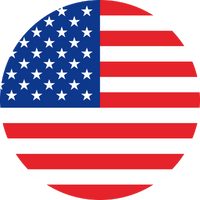
United States – IVD Registration with the FDA
Regulatory FrameworkIn vitro diagnostics are regulated by the U.S. Food and Drug Administration (FDA) under the Federal Food, Drug, and Cosmetic Act.Local Representative
Any foreign establishment engaged in the manufacture, preparation, propagation, compounding, or processing of a device imported into the United States must identify a United States agent (U.S. agent) for that establishment.Manufacturer Obligations
Manufacturers involved in production and distribution must complete an annual Establishment Registration and list their IVDs in the Device Listing database (FURLS).Quality System Requirements
A quality management system aligned with the Quality Management System Regulation (21 CFR Part 820), also called cGMP requirements, is mandatory. ISO 13485 is referenced since 2024.Recognition of other Registrations
The CE mark is not accepted; a specific FDA procedure is required.Approval Routes
Based on product risk and classification:
- 510(k) Notification Premarket Notification (predicate device existing)
- De Novo Request
- Premarket Approval (PMA)
Includes mandatory reporting, recalls, change notifications and regular updates to FDA listings.FDA-compliant with Metecon:
We help you choose and implement the right approval pathway for your IVD, covering everything from QMS to technical documentation.
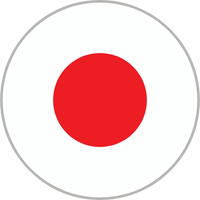
Japan – IVD Approval with the PMDA
Regulatory FrameworkThe Pharmaceutical and Medical Device Act (PMD Act) governs IVDs in Japan. The responsible authority is the Pharmaceuticals and Medical Devices Agency (PMDA) as part of the Ministry of Health, Labour and Welfare (MHLW). Local Representative
A Japan-based (Designated) Marketing Authorization Holder (MAH/DMAH) must be appointed. Foreign manufacturers must register their site ("Foreign Manufacturer Registration FRM"). Quality System Requirements
Japan requires ISO 13485 compliance, with additional local provisions (Ministerial Ordinance #169). Participating in the MDSAP Program.Recognition of other Registrations
Existing certifications may support the process but are not sufficient for approval.Approval Routes
Depending on the four different risk classes:
- Todokede (Class I), Pre-market Notification
- Ninsho (Class II, III with certification standard CS), Pre-market certification
- Shonin (Class II, III without CS & class IV)
Special requirements for product labelling. Regular reports, information about product changes, surveillance activities, and vigilance obligations apply.Entering the Japanese market:
We assist with product classification according to JMDN, the MAH/DMAH selection, documentation preparation, and direct communication with the MAH/DMAH.
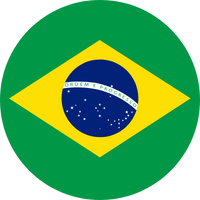
Brazil – IVD Approval via ANVISA
Regulatory AuthorityAgência Nacional de Vigilância Sanitária (ANVISA) oversees IVD regulation based on Law 6360/1976. Further resolutions were passed with the most relevant being RDC 830/2023.Local Representative
Foreign manufacturers must appoint a Brazilian legal representative (Brazil Registration Holder). The manufacturer of higher class products also needs to obtain the GMP-certificate from ANVISA.Quality System Requirements
ISO 13485 is recognized; MDSAP certification significantly facilitates the process.Recognition of other Registrations
Such certificates support the application process, but are not accepted as replacements.Approval Routes
Depending on classification:
- Notification "notificação" (class I, II) or
- registration "registro" (class III, IV) (II, IV) procedure.
Manufacturers must ensure regular updates, vigilance reporting, and, if needed, product recalls. Special requirements for product labelling.Path to ANVISA approval:
We help you prepare registration dossiers, choose a Brazil Registration Holder and support the entire approval process.
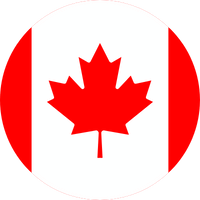
Canada – IVD Licensing via Health Canada
Regulatory ContextIVDs are regulated by Health Canada under the Medical Devices Regulations MDR (SOR/98-282).Local Representative
Foreign manufacturers do not need a local representative in Canada.Licensing Types
- Establishment License (MDEL) for distributors/importers and manufacturers of class I products
- Medical Device License (MDL) for Class II–IV products
A valid MDSAP certificate is mandatory for Class II–IV IVDs.Recognition of other Registrations
CE-mark and FDA approval are not accepted for registration purposes.Approval Process/MDL
An application has to be submitted to Health Canada based on the class of the IVD. Review of the Application and for higher classes submitted technical documentation by Health Canada.Post-Market Requirements
Include adverse event reporting, recalls vigilance and documentation maintenance. Changes have to be reportedAccessing the Canadian IVD market:
We guide you through QM requirements for MDSAP certification, the classification of your product followed by preparation of the required MDEL or MDL application. We support you during the entire process with Health Canada.
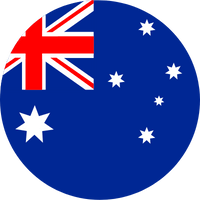
Australia – IVD Registration via the TGA
Regulatory FrameworkThe Therapeutic Goods Administration (TGA) regulates IVDs under the Therapeutic Goods Act 1989 and further informed by the Therapeutic Goods (Medical Devices) Regulations 2002.Sponsor Requirement
Only an Australia-based sponsor may list IVDs in the Australian Register of Therapeutic Goods (ARTG).Quality System Requirements
ISO 13485 is required; MDSAP certification is accepted and often preferred.Recognition of other Registrations
TGA accepts abridgement of conformity assessments based on marketing authorizations from "comparable overseas regulators" (mainly MDSAP countries) for classes 1-3. May support applications but do not replace TGA requirements.Approval Process
Based on risk class (1-4): includes review of technical documentation and existing certificates by TGA.
- Class 1 IVD: can be included in the ARTG via a self-declaration process (except self-testing or POC)
- Class 2/3: Conformity assessment by TGA or comparable overseas regulator
- Class 4: Conformity assessment by TGA.
Vigilance, recall management, document updates, post-market surveillance and sponsor coordination.Successfully register IVDs in Australia:
We manage ARTG submissions, review your previous certifications, and coordinate the selection and communication with a suitable Australian sponsor partner.
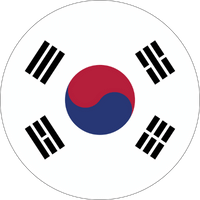
South Korea – IVD Registration via MFDS
Regulatory SystemIVDs are governed by the Ministry of Food and Drug Safety (MFDS) under the Medical Device Act (MDA).Local Licensing Requirement
Foreign companies must designate a Korea-based license holder KLH. The manufacturer itself needs a business license by MFDS.Quality System Requirements
Conformity with the Korean Good Manufacturing Practice (KGMP), based on ISO 13485, is mandatory.Recognition of other Registrations
CE or FDA may support the review but are not sufficient for approval.Approval Process
- Lower-risk IVDs (Class I): simple electronic listing process and submission of documents (Notification MDITAC)
- Medium -risk IVDs: (Class II): Certification by MDITAC
- Higher-risk IVDs (Class II-IV): Full approval procedure by MFDS with TD Review
Recall and vigilance procedures, periodic updates of registration data, post-market surveillance.Entering the Korean diagnostics market:
We support KGMP compliance, documentation preparation, and liaison with your Korean License Holder.
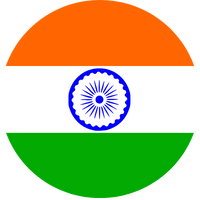
India – IVD Registration via CDSCO
Regulatory FrameworkThe Central Drugs Standard Control Organization (CDSCO) regulates IVDs under the Drugs & Cosmetics Act, 1940 and the Medical Devices Rules, 2017.Local Representative
Non-Indian manufacturers must appoint an Indian legal agent.Quality System Requirements
ISO 13485 is required. In some cases additional requirements such as auditing also applyRecognition of other Registrations
Not sufficient for registration but may be included in the documentation.Approval Routes
Conducted via the SUGAM Portal, including submission of technical documentation. Different forms are used in the approval process based on risk classes A-D. In general manufacturing and import licenses are required.Post-Market Requirements
Vigilance reporting, data maintenance, and recall procedures are mandatory.Go digital in India with confidence:
We support your online submission, help identify a reliable representative, and ensure documentation compliance.

Saudi Arabia – IVD Approval with SFDA
Regulatory FrameworkThe Saudi Food and Drug Authority (SFDA) regulates IVDs under the Royal Decree No. (M/54).Local Representative
A local Saudi Authorized Representative is required for all foreign manufacturers and is the interface with the SFDA.Quality System Requirements
ISO 13485 is required. The SFDA may request additional proof of conformity. International certificates (e.g. CE, MDSAP) must be reviewed by SFDA.Approval Routes
All IVDs must obtain Medical Device Marketing Authorization (MDMA), There are exceptions for devices that are considered safe and effective. MDMA Applications must follow the Technical File Assessment (TFA) registration route and submit registration documentation through the SFDA GHAD online portal. Post-Market Requirements
Payment of annual fees, Manufacturers must keep records updated, report incidents, have recall procedures and comply with post-market surveillance requirements. In addition, there are requirements for Unique Device Identification (UDI).Systematic entry into the Saudi IVD market:
We guide you through the GHAD system, TFA procedures/MDMA submissions, and all relevant SFDA conformity assessments and creation of country-specific documentation.
Worldwide market access for IVD: Helpful questions to speed up your RA process
- Are there country-specific differences in the definition of an in vitro diagnostic product? And are the classifications of the products comparable in the different countries?
- Which data collected in Europe are recognized in other markets?
- What additional information, data or documents must be provided on a country-specific basis?
- What is the structure of the technical documentation? Is the STED (Summary Technical Documentation) format suitable?
- How long are the product certificates valid?
- What has to be considered in case of product changes?